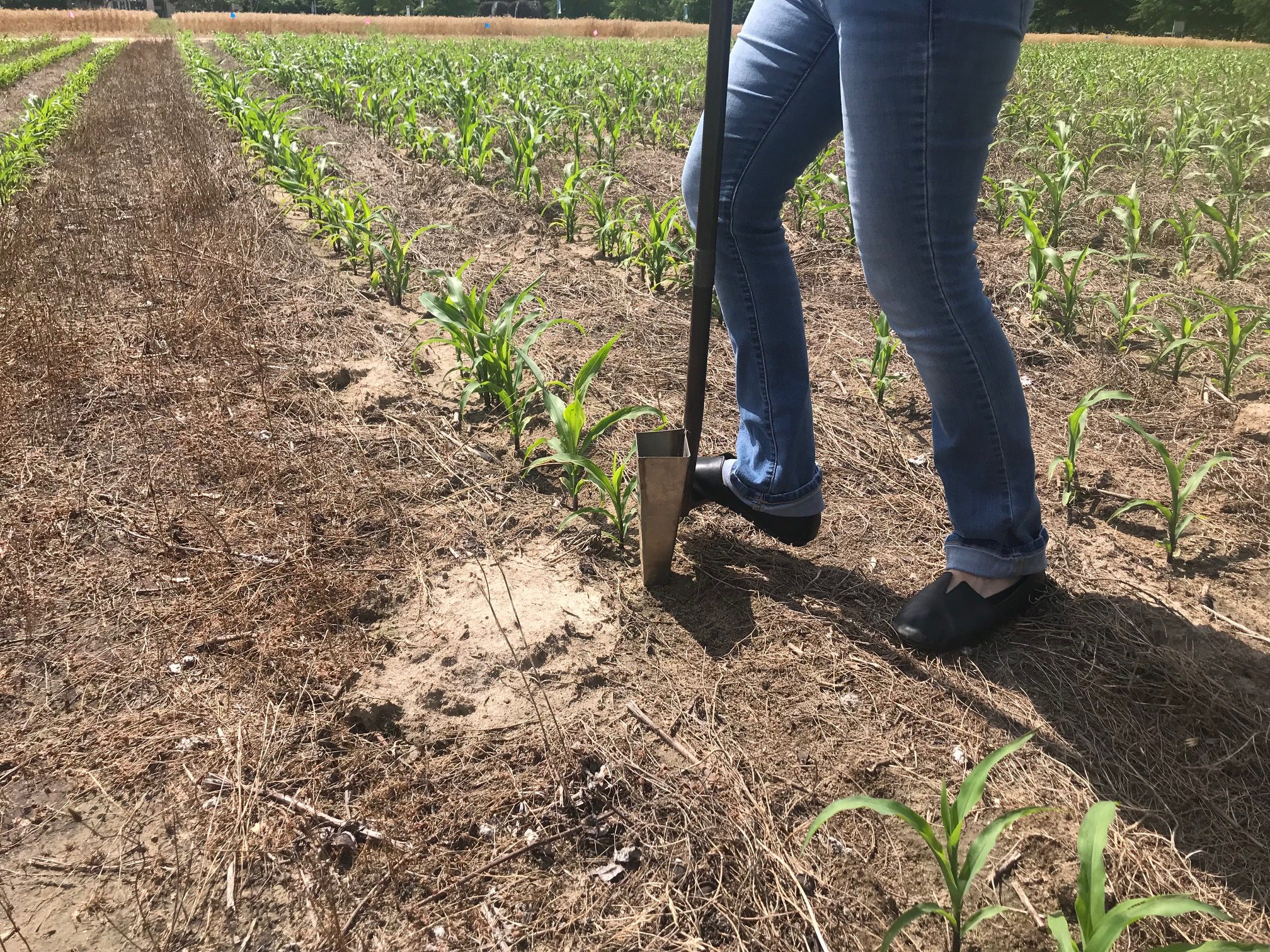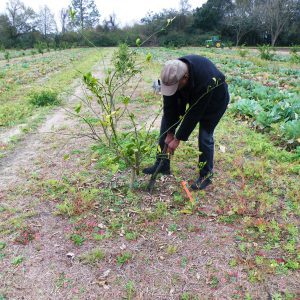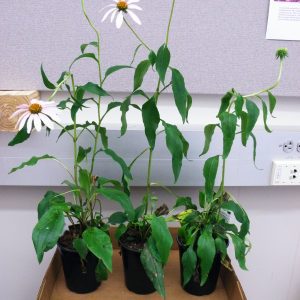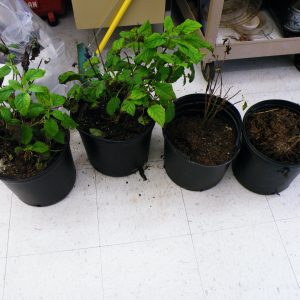Farming

Learn the services offered by the Plant Diagnostic Labs of Auburn University and guidelines for sample collection and submission.
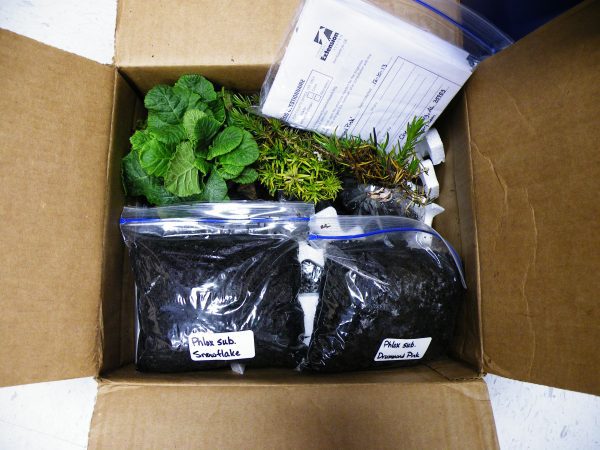
Figure 1. Good packaging of plant sample.
The Plant Diagnostic Labs of Auburn University can help you identify and treat your plant problems. Approximately 2,000 to 6,000 plant specimens and 1,000 to 3,000 nematode soil samples are processed each year at the labs. These plant specimens and soil samples come from a wide variety of crops including forages, fruits and nuts, ornamentals, turf grasses, vegetables, and field crops. Samples are submitted by homeowners, commercial growers, landscape maintenance companies, pest control companies, and regulatory agencies.
The two Alabama Cooperative Extension System Plant Diagnostic Labs are located on the Auburn University campus in the ALFA Agricultural Services and Research Building and at the C. Beaty Hanna Horticulture and Environmental Center at the Birmingham Botanical Gardens. The Auburn lab receives plant samples for diagnosis, soil samples for nematode analysis, insect samples for identification, and weed/plant samples for identification. The Birmingham lab provides plant disease diagnosis and recommendations for the greater Birmingham area including Jefferson County and adjoining counties. Many of the samples received at the Birmingham facility are landscape ornamentals and turf. Both labs also receive digital images for initial diagnosis but physical samples are needed for confirmation.
Plant specimens at both labs are examined for disease, insect, nutritional, cultural, and herbicide problems. Plant pathologists, soil and weed scientists, entomologists, horticulturists, and other Extension personnel are consulted as necessary in making diagnoses. These labs do not perform analyses for herbicide residues.
The accuracy of the diagnosis depends on the following:
- The size and condition of the plant specimen. Rotten, dry, dead, or incomplete plant specimens are not useful to provide an accurate diagnosis.
- The amount of information provided with the plant or soil sample. Be sure to describe the development of the problem. Use form ANR-0089 (Auburn lab) or form ANR-0089-B (Birmingham lab) available at your county Extension office, if possible. These forms are also available on the Alabama Extension website at www.aces.edu.
Once the problem is identified, recommendations can be made. But recommendations may vary with the planting situation. With the plant sample, always include information on the planting size and type (homeowner, production agriculture, etc.). Product labels, cost, and other practical considerations must be considered in making recommendations.
Your county Extension agent may be able to diagnose the plant problem, so we encourage you to check with your county Extension office first. If the problem diagnosis requires microscopic study and/or other laboratory testing procedures, the sample may be sent to the Plant Diagnostic Lab at Auburn for analyses and recommendations. If you are located in Jefferson, Blount, Walker, Tuscaloosa, Bibb, Shelby, or St. Clair counties, you may take or send your samples to the Plant Diagnostic Lab at the Birmingham location. With some problems, input is needed from pathologists, entomologists, weed scientists, agronomists, and/ or horticulturists. There is a service charge for plant samples sent for disease/problem diagnosis from Alabama residents. Out-of-state samples are charged at double the in-state rate, due to requirements for moving plant material across state borders. If you are planning to send a sample from out of state, please contact the lab first to get the appropriate permit that needs to be included with your sample. The exact charge depends upon the analyses required for the diagnosis. See rates on page 6.
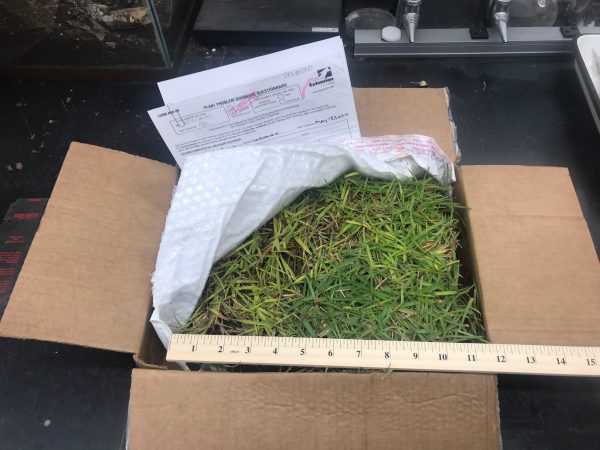
Figure 2. Turf sample
When submitting soil samples for nematode analysis, include form ANR-00F7, available at your county Extension office or from the Alabama Extension website at www.aces.edu. Always follow recommended practices for collecting, packaging, and mailing samples. The charge for a soil nematode analysis is $10 per sample.
You may send weed, plant, and insect specimens to the Plant Diagnostic Lab (at Auburn) for identification. These specimens are referred to Extension horticulture, agronomy, or entomology specialists. There is no charge for plant or weed identification. See page 6 for insect identification charges.
Samples for pesticide analysis should be sent to the Alabama Pesticide Residue Laboratory, 1081 South Donahue Drive, Auburn, AL 36832. It is preferred that samples be collected by an Agricultural Inspector from the Alabama Department of Agriculture and Industries. If you have questions, call (334) 844-4705.
Samples for soil/tissue nutrient analysis only should be sent to the Soil, Forage, and Water Testing Laboratory, ALFA Agricultural Services and Research Building, 961 South Donahue, Auburn University, Alabama 36849.
Procedures for Plant Problem Diagnosis
Collecting Plant Specimens
An adequate sample that is representative of the damage must be collected. Collect intact plants if possible. Include roots, because aboveground plant symptoms may reflect a root problem. Dig out (don’t pull up) the plants, and leave the soil attached. If intact plants cannot be collected, include plant parts that show damage. If possible, collect several plants or plant parts (fruits, nuts, twigs, leaves) representing different stages of the disease.
- When collecting spotted leaves from large woody ornamentals, collect 10 to 20 leaves that contain at least 20 spots or lesions.
- When collecting stem, branch, or trunk lesions or galls, collect at least 5 or more examples of the damage.
- When collecting lawn or turf specimens, take a sample from the edge of the affected area, providing both diseased and healthy plant material. Samples should be about 8 to 10 inches square by 3 inches deep.
- If you suspect a soil nutritional problem, send 1 pint of soil from the affected area and 1 pint of soil from a nonaffected area. Send foliage samples (to fill an 18-inch by 12-inch paper bag) from the problem area and from the healthy area (see table on page 4).
- Keep specimens cool if they must be held before packaging.
- Figure 3. Digging up plant sample
- Figure 4a. Whole plant samples
- Figure 4b. Whole plant samples
Packaging Plant Specimens
- Package specimens immediately after collecting them.
- When you collect whole plant specimens, wrap the roots in a plastic bag so that the foliage is not mixed with soil. This is especially important for field crops when nutritional foliage analysis is desired. Tissue analysis will not be accurate if soil contaminates the foliage.
- Enclose the plant specimen with plastic-wrapped roots in a large plastic bag. Do not wrap plants in a moist or wet paper towel.
- When collecting plant foliage or foliage segments (except for fleshy fruits and vegetables; see below), enclose the sample in a plastic bag. Seal the bag.
- Wrap fleshy fruits and vegetables (tomatoes, cabbage, Brussels sprouts, broccoli, etc.) in several layers of dry newspaper. Do not place them in a plastic bag.
- When sending a soil sample with the plant specimen, place the soil in a separate plastic bag.
- Pack the specimen well in a sturdy container (padded envelopes or boxes are best) to prevent crushing.
- Provide as much information as possible, using the appropriate submission form (Form ANR-0089 or ANR-0089-B) available from your county Extension agent. If you need more space, use additional sheets of paper. The more information provided with the specimen, the more accurate the diagnosis and control recommendations will be.
- Keep plant specimens cool if they must be held before mailing.
Mailing Plant Specimens
Send the package to the Plant Diagnostic Lab, 164C ALFA Agricultural Services and Research Building, 961 South Donahue, Auburn University, Alabama 36849- 5624 or the Plant Diagnostic Lab, 2612 Lane Park Road, C. Beaty Hanna Horticulture and Environmental Center, Birmingham Botanical Gardens, Birmingham, Alabama 35223, if you are located in or adjacent to Jefferson County.
If possible, mail your specimens during the first part of the week (Monday or Tuesday). Specimens mailed on Thursday or Friday may arrive in the lab on Monday morning in a decayed condition caused by secondary bacteria and fungi which grow under warm, humid conditions. Diagnosis is not possible on decayed samples.
Laboratory Procedure for Plant Problem/Disease Diagnosis
At the lab, the plant specimen is examined and compared to the symptoms described on the information sheet. This information is important because damage to the plant during mailing can be confused with the real problem. The description of the problem enables us to focus on the original symptoms seen at the planting location.
Many of the plant specimens are studied under a microscope for evidence of a disease-causing agent. In some cases, pieces of the affected tissue are placed in a culture medium to allow accurate identification of agents causing the disease. Fungal or bacterial identification in culture requires one to several weeks. Some other diagnostic tests that may be needed in specific situations include ELISA (serological assay), a variety of bacterial characterization tests, specific microscopic staining techniques, pathogenicity testing, and PCR (molecular assay). The exact charge ($15 to $30; see table 2) and time needed for this additional testing depend on the number and type of tests required for diagnosis. A written report and invoice will be sent when all testing is completed. See Plant Problem Diagnosis and Nematode Analysis Results and Recommendations for more information on methods of response.
Extension pathology, entomology, agronomy, weed science, and horticulture specialists may be consulted for the diagnosis of the many unusual problems.
Procedures for Soil Nematode Analysis
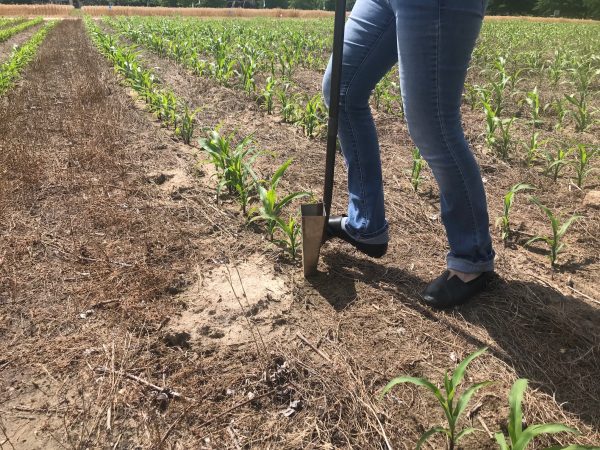
Figure 5a. Nematode soil sample
Collecting Soil
- Collect 2 pints of soil from the root zone area of affected (but not dead) plants. Repeat this procedure in several locations in a suspect field. Then thoroughly mix the soil in a bucket or similar container.
- Do not collect extremely wet or dry soil. Dry soil is not acceptable for nematode analysis because the nematodes quickly die and decompose.
- For best results, collect soil samples for nematode analysis in late summer and fall, before cold weather arrives. Nematodes overwinter as eggs in the soil, which cannot be identified accurately.
Packaging Soil
- Immediately after mixing, place two pints of soil into a plastic bag and seal the bag.
- Do not expose soil samples to extremely hot or cold temperatures.
- Do not allow soil samples to become dry.
- Pack the soil sample in a sturdy container (boxes are best). Also fill out the nematode sample submission form (Form ANR-00F7), which you can get from your county Extension agent or the Alabama Extension website. Always indicate the current crop (or crop to be planted) and the previous crop. Control recommendations cannot be made without this information.
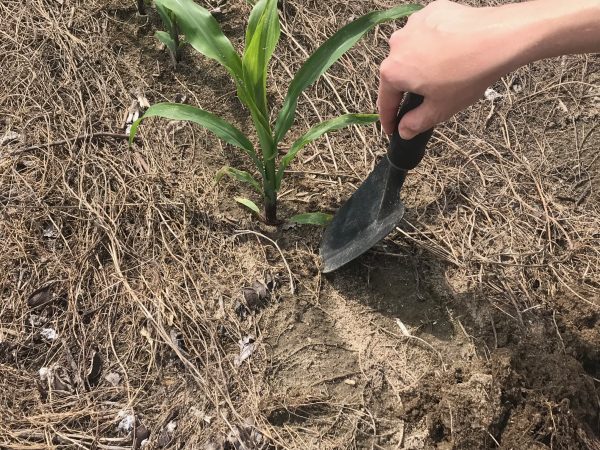
Figure 5b. Nematode soil sample
Mailing Soil
Soil samples for nematode analysis should be mailed to the Plant Diagnostic Lab, ALFA Agricultural Services and Research Building, Auburn University, Alabama 36849- 5624. A $10 fee is charged for each sample analyzed.
If possible, mail samples during the first part of the week. Samples mailed on Thursday or Friday usually remain in the post office during the weekend. Often, high summer temperatures will kill soil nematodes before the samples arrive in the lab on Monday.
Laboratory Processing and Analyzing Soil Samples for Nematodes
At the lab, a centrifugation sugar flotation technique for soil nematode extraction is used. Once extracted, the plant parasitic nematodes are identified to genus level and counted.
Control recommendations are based on the following:
- The types of nematodes present.
- The numbers of each type.
- The crop currently being grown (or to be planted) and the previous crop.
- The particular plant site situation (homeowner or commercial).
Table 1. Recommended Sampling Periods for Specific Crops
| Crop | Best Time for Sampling |
|---|---|
| Corn | August–October |
| Cotton | September–October |
| Peanuts | August |
| Soybeans | September–October |
| Tomatoes | June–September |
| Potatoes | May–August |
Plant Problem Diagnosis and Nematode Analysis Results and Recommendations
The diagnosis of most plant problems and the analysis of soil samples usually require 4 to 14 days from the time the sample is received. More time may be needed if further diagnostic tests need to be conducted (ex: culture/isolation, serology, or molecular).
A written report of the diagnosis/analysis and recommendations is emailed (if an email address is supplied on the submission form) or mailed when testing is completed. For client plant samples, the diagnostic response is sent directly to the client along with the service charge invoice. When county Extension agents are involved, they will also receive an electronic copy of the response.
Procedures for Insect Identification
Insects sent for identification must be properly collected, packaged, and mailed in order to be accurately identified.
- Collect whole insects in good condition. Collect as many insect stages as possible, such as eggs, larvae, pupae, and adults.
- Place insects, except caterpillars, in tissue paper lightly soaked in alcohol. Place tissue in a small container without crushing the insect. Keep moths and butterflies intact in a small container.
- Put caterpillars and spiders in boiling water before placing them in alcohol-soaked tissue.
- Fill out the Insect Identification Form available on the Alabama Extension website or from your county Extension agent with as much information as possible. Include the following: date collected, place collected (address and type of host or site: crop, yard, home, person); exact host or crop; extent or type of damage; name of the person who collected the insect.
- If the insect was causing plant damage, include a plant specimen showing evidence of the plant injury. See Procedures for Plant Problem Diagnosis for details.
- Place the insect container or package in a mailing tube or box or other protective package and mail to the Plant Diagnostic Lab – Insect Sample ALFA Agricultural Services and Research Building, 961 South Donahue Drive, Auburn University, Alabama 36849-5624.
- If the sample requires an immediate reply, a specialist will respond by telephone or email. A delayed reply (phoned or written) may be the result of the travel schedule of the specialist or incomplete information submitted with the sample.
In some cases, insect identifications must be referred to the USDA Insect Identification Lab in Beltsville, Maryland. Replies from Beltsville usually require 3 to 5 weeks.
Table 2. Charge Schedule for Plant Diagnostic Lab Services
| Service | Cost |
|---|---|
| Plant Samples for Disease Diagnosis | |
Homeowner samples | $15 |
| Commercial samples | usually $20 or $25 |
| Some molecular analyses are $30. The client will be consulted before the analysis is done. | |
| Soil Samples for Nematode Analysis | |
| Soil Nematode Analysis | $10 |
| Insect Samples | |
| Routine | $5 |
| Identification requiring a slide mount for microscopy | $10 |
| Commercial/industrial | $20 |
| Plant or Weed Identification | No charge |
Procedures for Weed or Other Plant Identification
To identify weeds or other plants, a complete plant or a specimen containing leaves, stem, roots, and flowers (or seedheads in the case of grasses or grasslike plants) or fruit is absolutely necessary. The success of each identification depends to a large degree on the condition of the plant material at the time of identification. Decomposed, dry, or incomplete plant specimens make identification difficult, if not impossible. Adequate specimens with flowers or fruit usually produce positive results. The following points will help in the identification process and in making control recommendations.
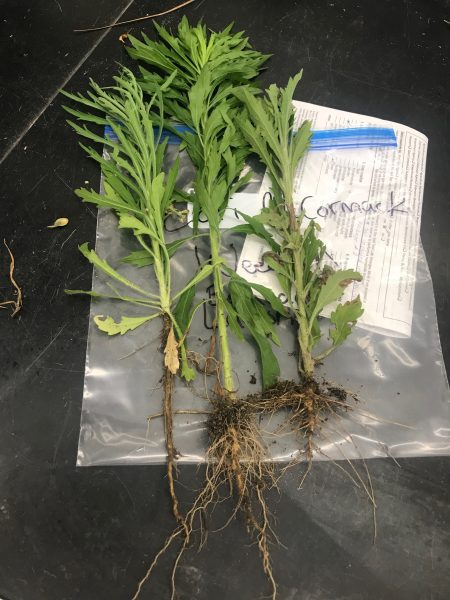
Figure 7. Weed ID sample
Collecting Weed Specimens
Collect and submit intact plants, if possible. If the weed is small, collect several plants.
- If the plant has flowers and/or fruit present, collect plants that have these parts.
- If the plant is too large to submit, send samples of the roots, stem, leaves, flowers, and fruit. Please indicate the size (height) of the plant.
- In some plants, especially grasses, it is necessary to have the flowers or seedheads. Otherwise, only a general identification can be made.
Packaging and Mailing Specimens
- Do not let the plants lie around for several days before packaging.
- Place the plant(s) or plant parts in a plastic bag and seal.
- Pack the plastic bag in a shipping container that is sturdy and large enough to prevent crushing the specimen during transit.
- Mail the package to Plant Diagnostic Lab – Weed ID, ALFA Agricultural Services and Research Building, 961 South Donahue Drive, Auburn University, Alabama 36849-5624
- Complete the Plant Submission form ANR-0089 and label as either weed ID or plant ID and include the form in the package.
Additional Information
The following information should be included with each specimen:
- Location or crop where weed was collected. For example, roadside, forest area, cotton field, edge of the pond, St. Augustine lawn, fescue pasture, etc.
- Any other pertinent information that might influence the control recommendation, such as location and proximity of desirable plants in the area; use of the pond, such as swimming, fishing, or irrigation; size and degree of weed problem; etc.
Kassie Conner, Extension Specialist Agriculture, Forestry, and Natural Resources at Auburn University
Revised April 2022, Plant Diagnostic Lab Services, ANR-0450

